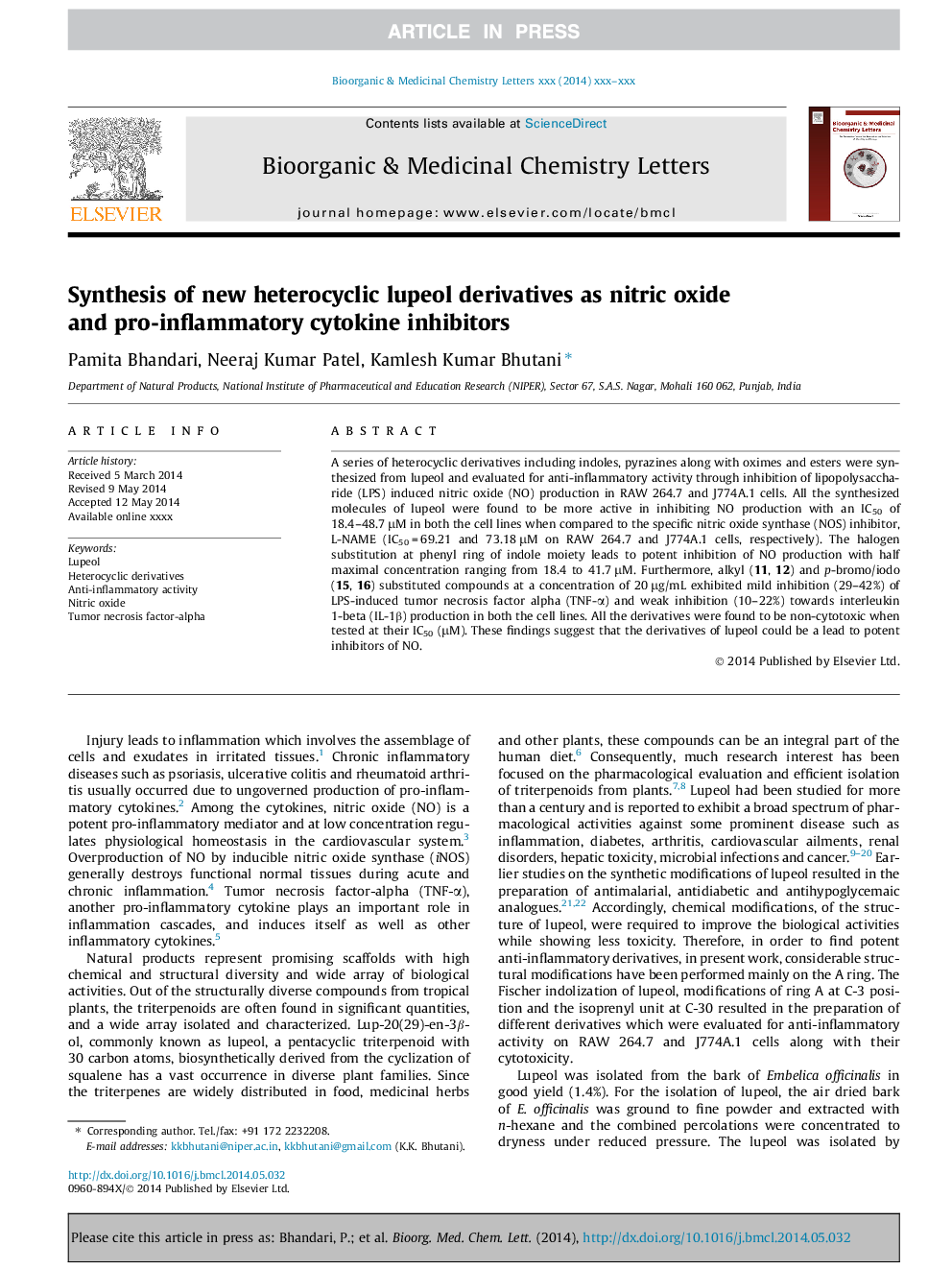| Article ID | Journal | Published Year | Pages | File Type |
|---|---|---|---|---|
| 10591149 | Bioorganic & Medicinal Chemistry Letters | 2014 | 4 Pages |
Abstract
A series of heterocyclic derivatives including indoles, pyrazines along with oximes and esters were synthesized from lupeol and evaluated for anti-inflammatory activity through inhibition of lipopolysaccharide (LPS) induced nitric oxide (NO) production in RAW 264.7 and J774A.1 cells. All the synthesized molecules of lupeol were found to be more active in inhibiting NO production with an IC50 of 18.4-48.7 μM in both the cell lines when compared to the specific nitric oxide synthase (NOS) inhibitor, L-NAME (IC50 = 69.21 and 73.18 μM on RAW 264.7 and J774A.1 cells, respectively). The halogen substitution at phenyl ring of indole moiety leads to potent inhibition of NO production with half maximal concentration ranging from 18.4 to 41.7 μM. Furthermore, alkyl (11, 12) and p-bromo/iodo (15, 16) substituted compounds at a concentration of 20 μg/mL exhibited mild inhibition (29-42%) of LPS-induced tumor necrosis factor alpha (TNF-α) and weak inhibition (10-22%) towards interleukin 1-beta (IL-1β) production in both the cell lines. All the derivatives were found to be non-cytotoxic when tested at their IC50 (μM). These findings suggest that the derivatives of lupeol could be a lead to potent inhibitors of NO.
Keywords
Related Topics
Physical Sciences and Engineering
Chemistry
Organic Chemistry
Authors
Pamita Bhandari, Neeraj Kumar Patel, Kamlesh Kumar Bhutani,
